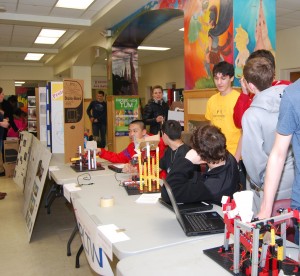Members of t he Tri-States Consortium will visit our district for several days during the month of May to review our K-12 science curriculum and program. The Tri-States Consortium is a dynamic learning organization of public school districts that values systems thinking as the foundation for continuous improvement. The Consortium assists its more than 45 member districts from New York, New Jersey, and Connecticut in using quantitative and qualitative data to enhance student performance and engagement.
he Tri-States Consortium will visit our district for several days during the month of May to review our K-12 science curriculum and program. The Tri-States Consortium is a dynamic learning organization of public school districts that values systems thinking as the foundation for continuous improvement. The Consortium assists its more than 45 member districts from New York, New Jersey, and Connecticut in using quantitative and qualitative data to enhance student performance and engagement.
The district Science Leadership Team recently met to plan for this visit. We looked at the eight Tri State assessment indicators: Performance-based Assessment; Student Meta-cognition in the Learning Process; Student Performance Data; Curriculum and Instruction; Professional Learning; Equitable Support for Student Needs; Shared Vision and Environment for Change; and Parent and Community Support.
We brainstormed forms of evidence at each grade level that would fall under each indicator or multiple indicators. We will continue to work on the collection of evidence throughout the school year.
The team developed essential questions that will help focus the Consortium’s visit:
- To what extent is the K-12 science curriculum aligned on and across grade levels?
- To what extent is our science program incorporating a balance of content knowledge and problem-based learning hands-on activities?
- How is the science program addressing the needs, interests, and learning profiles of all students?
- To what extent are students engaged in activities that reflect their enthusiasm and understanding of science and the world around them?
One of the goals for this visit is to highlight all of the science and engineering extensions that we have begun to incorporate into our curriculum such as the “Engineering is Elementary ” program, Project Lead the Way, Science Research, Starlab, and the integration between science, social studies, math, and technology. We also want to highlight all the work teachers have been doing on creating Project-based learning opportunities with the utilization of technology to enhance each unit of study. This year, every elementary student will experience a robotics curriculum and more than 1000 students will participate in 3D printing project design.
by Brian Culot and Samantha Levine
